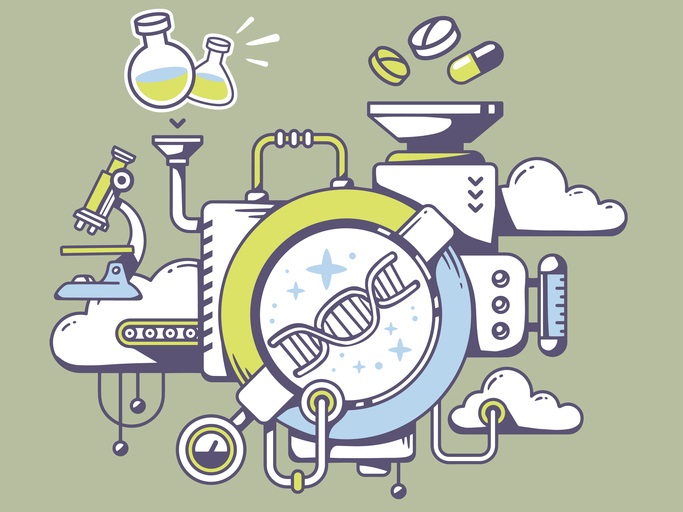Health Relevance
The human body is a complex system that requires many different components acting in harmony to work properly. A key component needed for almost every action the cells in our body do is called the protein. Proteins come in all different shapes and sizes and work as the machinery in our cells to get jobs done. For example, some proteins can help relay important messages from one cell to another, other proteins can signal a cell and help it move, while others work together to build other components in the cell. When people develop a disease, it is often because a protein or a group of proteins fail to work or begin to work improperly. Some researchers focus on developing chemical compounds (drugs) that can interact with these proteins to restore function.
The blueprint for how proteins are made comes from our DNA, in specific sections called genes. There are roughly 20,000-25,000 genes in the human genome that contain information on how proteins are made. Of these genes, approximately 3,000 are estimated to be part of the druggable genome, the subset of genes creating proteins with the ability to bind drug-like molecules. Yet, less than 10% of these druggable proteins are currently targeted by FDA-approved drugs.
Many of these druggable proteins fall into three different families called G-protein coupled receptors, ion channels, and kinases. Although we know a great deal about some members of these protein families, vast numbers of proteins within these families are almost completely unknown. The lack of information for many of these proteins indicates there are numerous targets in the human body that may be impacted by new, or even currently available, drug treatments.
To help researchers begin to study these unknown proteins, the NIH Common Fund instituted the Illuminating the Druggable Genome (IDG) program in 2014. The purpose of the IDG program is to help identify targets of interests so scientists can explore new areas of research. Not only will this help public health through the investigation of new targets, but it potentially will also help reduce the overlap of multiple scientists focusing on one, already well studied, target of interest. The IDG program hopes to accomplish this by developing better tools so researchers can find out about these proteins, distribute information on these proteins to the biomedical community, and support research that helps us understand how these proteins may work.
By focusing on understudied targets similar to those for which there are already drugs, the IDG hopes to find potential new targets for medications to treat or cure some of our most burdensome diseases and share what is learned with the research community so that all can build on this knowledge.
Make sure to check out the highlights and news pages for exciting information related to the IDG program!



